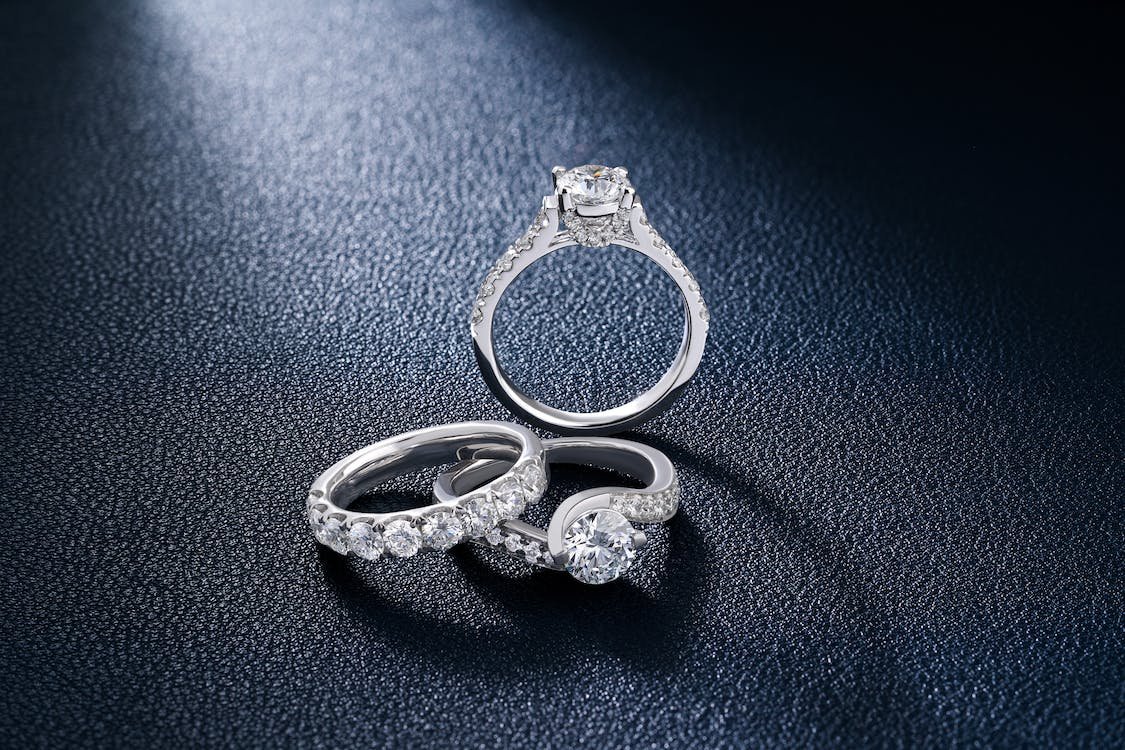Guide to Engagement Ring Settings
Image Courtesy of Pexel
Content of the Article
1. Introduction
2. A Brief History of Engagement Rings
3. Understanding Engagement Ring Settings
4. Popular Engagement Ring Settings
5. Customising Your Engagement Ring
6. Tips for Buying the Perfect Engagement Ring
7. Conclusion
Introduction
Marriage Maximilian I of Austria and Mary of Burgundy, Image Courtesy of Hemmahoshilde Word Press
An engagement ring symbolises the love, commitment, and the beginning of a new journey together. Choosing the perfect engagement ring can feel overwhelming, but understanding the various ring settings available can make the process more enjoyable. In this comprehensive guide, we will explore the different engagement ring settings, their history, and how to make the right choice for your partner.
A Brief History of Engagement Rings
The engagement ring of Mary of Burgundy, Image Courtesy of Hemmahoshilde Word Press
Engagement rings have been a symbol of love and commitment for centuries. The ancient Egyptians are believed to have exchanged rings made of reeds, while the ancient Romans used iron rings. The first documented use of a diamond engagement ring dates back to 1477 when Archduke Maximilian of Austria presented one to Mary of Burgundy. Since then, engagement rings have evolved, with various settings becoming popular over time.
Understanding Engagement Ring Settings
What is a Ring Setting?
The “setting” of a ring refers to the metal framework that holds the diamond or gemstone in place. It not only adds to the aesthetic appeal of the ring but also plays a crucial role in securing the stone. There are numerous engagement ring settings, each offering its unique style and functionality.
Why the Setting Matters
The ring setting is essential for several reasons. Firstly, it determines the overall appearance of the ring, affecting its style and personality. Secondly, it impacts the security of the diamond or gemstone, preventing it from falling out or becoming damaged. Lastly, the setting can influence how the stone catches the light, enhancing its sparkle and brilliance.
Factors to Consider When Choosing a Setting
There are several factors to consider when selecting the perfect engagement ring setting:
Style: Choose a setting that reflects your partner's taste and preferences.
Lifestyle: Consider your partner's daily activities, as some settings are more secure and suitable for active lifestyles.
Maintenance: Some settings require more care and cleaning than others.
Stone Shape: The shape of the diamond or gemstone might determine the best setting to showcase it.
Popular Engagement Ring Settings
Image Courtesy of H&F Jewellery
Prong Setting
The prong setting is a classic choice, featuring metal claws that hold the stone in place. It allows for maximum light exposure, enhancing the diamond or gemstone's sparkle. Prong settings can have four, six, or even more prongs, with the four-prong variant being the most popular due to its simplicity and elegance.
Image Courtesy of Shining Diamonds
Bezel Setting
The bezel setting is characterised by a metal rim that encircles the stone, providing a sleek and modern appearance. This setting offers increased security for the diamond or gemstone and is ideal for those with active lifestyles or occupations where the ring might be exposed to potential damage.
Image Courtesy of Hitched
Tension Setting
A tension setting holds the stone in place by applying pressure from the metal band. This creates the illusion that the diamond or gemstone is floating between the metal, resulting in a contemporary and eye-catching design. Tension settings are ideal for showcasing unique stone shapes and sizes.
Image Courtesy of Faith Jewellers
Halo Setting
In a halo setting, the centre stone is encircled by smaller diamonds or gemstones, creating a "halo" effect. This setting enhances the appearance of the centre stone, making it appea
Image Courtesy of precious Jewels
Pavé Setting
Pavé settings feature numerous small diamonds or gemstones set closely together, resembling a paved surface. The pave setting adds sparkle and brilliance to the ring, often used on the band or as a complement to the centre stone. Pave settings are suitable for those who appreciate intricate and detailed designs.
Image Courtsey of Blue Nile
Channel Setting
Channel settings showcase a row of diamonds or gemstones set between two parallel metal walls, creating a clean and streamlined look. This setting offers added security for the stones and is perfect for those who prefer a more minimalistic style.
Image Courtesy of Abelini
Bar Setting
In a bar setting, diamonds or gemstones are held in place by individual metal bars. This setting allows for light to pass through the stones, enhancing their brilliance. Bar settings are ideal for those who appreciate modern and geometric designs.
Image Courtesy of Wharton Gold
Gypsy Setting
The gypsy setting, also known as a flush setting, features the stone set flush with the surface of the metal band. This setting offers a low-profile design, providing excellent protection for the diamond or gemstone. Gypsy settings are suitable for those who prefer a subtle and understated look.
Customising Your Engagement Ring
Combining Different Settings
Multi-stone 4 - prong engagement ring with pavé accents, Image Courtesy of Bijoux Majesty
For a truly unique engagement ring, consider combining different settings. For instance, you could opt for a halo setting for the centre stone and a pave setting for the band. The possibilities are endless, allowing you to create a ring that reflects your partner's individual style.
Choosing the Right Metal
The choice of metal can significantly impact the overall appearance and durability of the engagement ring. Popular options include gold (yellow, white, or rose), platinum, and palladium. Consider your partner's preferences and lifestyle when choosing the ideal metal.
Selecting the Perfect Diamond or Gemstone
The diamond or gemstone is the centrepiece of the engagement ring. Consider factors such as the four Cs (carat, cut, clarity, and colour) when selecting a diamond. Alternatively, you could choose a coloured gemstone, such as sapphire, ruby, or emerald, for a unique and personal touch.
Tips for Buying the Perfect Engagement Ring
Set a Budget
Image Courtesy of Beyond 4 Cs
Determine a budget for the engagement ring before beginning your search. This will help you focus on options within your price range and prevent overspending.
Research Your Partner's Preferences
To ensure you select a ring your partner will love, pay attention to their style and jewellery preferences. Observe the types of jewellery they wear, ask friends or family for input, or discuss their preferences directly with your partner.
Work with a Trusted Jeweller
Choosing a reputable jeweller is crucial when purchasing an engagement ring. Look for jewellers with positive reviews, transparent pricing, and certifications from professional organisations, such as the Gemological Institute of America (GIA) or the British Jewellers' Association (BJA).
Conclusion
Mastering the art of engagement ring settings involves understanding the various options available, their unique characteristics, and how they align with your partner's preferences and lifestyle. By considering factors such as style, metal, and the diamond or gemstone, you can create a beautiful and meaningful symbol of your love and commitment.
Frequently Asked Questions
Q 1: What is the most secure engagement ring setting?
A: Bezel and channel settings are considered the most secure options, as they fully or partially enclose the diamond or gemstone, protecting it from potential damage or loss.
Q2: Which engagement ring setting is best for showcasing the diamond or gemstone?
A: Prong and tension settings are ideal for showcasing the stone, as they allow for maximum light exposure, enhancing the stone's brilliance and sparkle.
Q3: Can I mix different metals in one engagement ring?
A: Yes, mixing metals is a popular trend in engagement ring design. Combining different metals, such as yellow gold with white gold or platinum, can create a unique and visually appealing ring.
Q4: How can I determine my partner's ring size without them knowing?
A: You can discreetly determine your partner's ring size by borrowing a ring they currently wear on the intended finger and having it measured by a jeweller. Alternatively, you can ask friends or family members if they know your partner's size.
Q5: Can engagement ring settings be changed after purchase?
A: Yes, many jewellers offer services to modify or update the engagement ring setting. However, it's essential to consult with a professional to determine if the desired changes are feasible without damaging the ring or stone.














